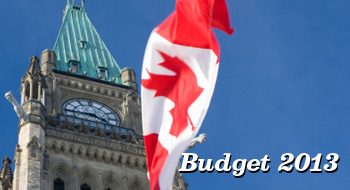
Ottawa is urging the provinces to move forward on pooled registered pension plans (PRPPs), noting in this year’s federal budget that the federal PRPP regulatory framework has been fully implemented.
“PRPPs will provide a new, accessible, large-scale and low-cost pension option to employers, employees and the self-employed,” the budget states. “Provinces will need to introduce their own enabling legislation to make PRPPs available throughout Canada.”
The push for PRPPs for the provinces isn’t really a surprise, considering that it’s been a couple of years since the plans were first announced, says Ian Edelist, pension practice leader at consultancy firm Eckler.
“There have been some failed attempts in B.C. and Quebec, which have to do with provincial politics more than anything,” Edelist says. “In Saskatchewan in yesterday’s budget, they said they were going to introduce a PRPP-type framework.”
Read more on the 2013 Federal Budget:
- Budget: Impact of taxation rules on pensions
- Little for seniors in 2013 budget
- Federal Budget 2013: Closing the loopholes
The budget also contains steps to align employee compensation offered by Crown corporations with what is available to federal employees. “The government will continue to work with Crown corporations with a view to moving to a 50-50 cost sharing between the employer and employees by 2017, and aligning the age at which retirement benefits become available with those announced in the 2012 budget for post-2012 hires under the public sector pension plan,” the 2013 budget states.
In last year’s budget, the government introduced measures that would delay the eligibility age for Old Age Security (OAS) to 67 from 65. The changes will be phased in starting in 2023, with full implementation by 2029.
However, there was no mention of the country’s retirement income system in this year’s budget, which Edelist says is a concern. “At some point, the government is going to have to figure out how they mesh the change in OAS retirement age with the Canada Pension Plan,” he says. “We have some lead time, because the changes aren’t taking place for a while, but they’re going to have to figure this one out.”
Edelist says he would also like to have seen target benefit plans mentioned in the budget. “Many provinces and jurisdictions are moving ahead with these plans, and there still hasn’t been a reference in the budget,” he says. “Even if some provinces haven’t implemented them yet, they are at least committed to creating a framework, and I really would have liked to have seen more flexibility in the way to design pension plans.“
Federal Finance Minister Jim Flaherty’s eighth budget was focused on jobs and eliminating the deficit.
The budget did contain a number of minor tweaks, such as a new 25% donor tax credit for first-time charitable donations which will be applied on top of the existing federal charitable tax credit of 15% on donations up to $200 and 29% on donations above the $200 mark.
Ottawa is also moving to phase out the 15% tax credit for labour-sponsored venture capital corporations by 2017, a change that will effectively kill off labour-sponsored mutual funds.
Doug Watt is an Ottawa-based writer.
